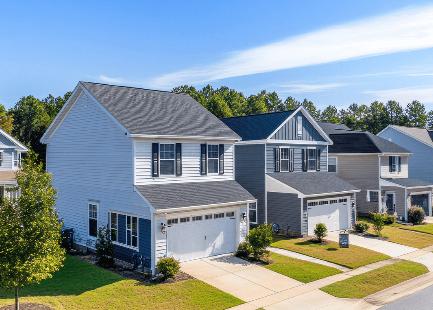Urban revitalization projects are at the heart of transforming neglected city areas into vibrant, livable spaces. However, traditional financing methods often fall short when it comes to funding these large-scale and sometimes risky developments.
This is where hard money loans for real estate become a crucial part for investors seeking to participate in these revitalization efforts. As the need for redevelopment continues to rise, so do the hard money lending trends for urban revitalization projects.
Let’s take a closer look at this.
Understanding Urban Revitalization and Hard Money Lending
Urban revitalization involves the redevelopment or renovation of areas within cities that have fallen into disrepair or are underutilized. These projects can range from the conversion of abandoned buildings into residential units to the complete overhaul of entire neighborhoods, improving infrastructure, housing, and commercial spaces.
Hard money loans are short-term, asset-based loans typically offered by private hard money lenders. They are designed for real estate investments, particularly when speed is of the essence, and traditional bank loans aren’t a viable option. In the context of urban revitalization, hard money loans for real estate have become essential for developers who need quick access to capital to secure properties. These loans cover renovation costs as well as bridge financial gaps during the project lifecycle.
Key Hard Money Lending Trends for Urban Revitalization in 2024
1. Rising Interest in Secondary Markets
While major cities like New York, Los Angeles, and Chicago have long been focal points for urban revitalization, 2024 is seeing increased interest in secondary and even tertiary markets. Cities like Detroit, Cleveland, and St. Louis, which were once overlooked, are now becoming prime candidates for urban redevelopment.
These emerging markets are gaining attention due to lower property acquisition costs and higher potential returns on investment (ROI). Hard money lenders are increasingly stepping into these areas, offering flexible financing for projects that aim to revitalize downtown districts, renovate historical buildings, or convert industrial spaces into residential properties.
2. Increased Focus on Affordable Housing
One of the primary goals of urban revitalization is addressing housing shortages in metropolitan areas. As affordability remains a critical issue, hard money lenders offer more favorable terms to developers focused on affordable housing projects. These hard money loans for real estate are designed to help bridge the financing gap, making it possible for developers to invest in low-income neighborhoods and bring much-needed housing to market.
Real estate investors looking to tap into the affordable housing market are finding that hard money loans provide the quick financing needed to acquire properties and begin redevelopment before securing longer-term financing options.

3. Sustainability-Driven Projects
As urban revitalization projects evolve, there’s an increasing focus on sustainability. Green buildings, energy-efficient designs, and eco-friendly infrastructure are becoming critical components of redevelopment efforts. Hard money lenders are adjusting their criteria to fund projects that incorporate sustainable practices.
Private hard money lenders now recognize that sustainability can increase the long-term value of urban properties, especially as cities and local governments offer incentives for eco-friendly development. Investors planning sustainable urban revitalization projects can leverage this trend by securing hard money loans designed specifically for green initiatives.
4. Shorter Loan Terms to Match Market Volatility
One of the characteristics of hard money loans is their short-term nature. However, as market conditions become more volatile, particularly in real estate, lenders are offering even shorter loan terms for urban revitalization projects. This trend allows investors to secure financing for quicker, high-impact projects with the flexibility to refinance or adjust their plans as market conditions change.
Investors who are rehabbing properties or flipping residential units in urban centers will benefit from these shorter loan terms, which help them respond to market shifts while avoiding long-term debt commitments.
5. Flexible Loan Structures for Large-Scale Projects
Urban revitalization projects can vary significantly in scale, from renovating a single building to redeveloping an entire block. To accommodate this range, hard money lenders are offering more flexible loan structures, tailoring their terms to meet the needs of larger, multifaceted projects.
This flexibility includes staged funding, where portions of the loan are released as different phases of the project are completed, ensuring that the developer can continue without funding delays. Investors undertaking large-scale urban redevelopment can benefit from these loan structures, allowing them to better manage cash flow and minimize financial risks.
How to Capitalize on Hard Money Lending Trends For Urban Revitalization
Urban revitalization offers attractive opportunities for real estate investors, but success hinges on understanding how to secure the right financing. Here are some key tips for leveraging hard money loans for urban projects:
- Partner with Local Hard Money Lenders: Seek out lenders with experience in your target market. A local private money lenderwill better understand the specific challenges and opportunities of your city’s real estate landscape.

- Prepare a Solid Investment Plan: Hard money lendersprioritize asset-based lending, but they also want to see a detailed investment plan. Include projected timelines, costs, and potential returns to improve your chances of approval.
- Leverage Short-Term Loans for Quick Gains: If your revitalization project has a short turnaround time, such as rehabbing a single building, take advantage of short-term hard money loans for real estate. This allows you to complete the project and exit quickly, minimizing interest costs.
- Incorporate Sustainability: Investors who prioritize eco-friendly and energy-efficient designs can often secure better terms and take advantage of government incentives.
- Use Flexible Hard Money LoanStructures for Larger Projects: If you’re working on a larger, phased project, find a hard money lender that offers flexible loan disbursements. This ensures you get the funding you need at each stage of development without overextending your finances.
Leverage Hard Money Lending Trends For Urban Revitalization Via Insula Capital Group
Ready to invest in urban revitalization projects? Insula Capital Group is here to help. Our expert team provides flexible hard money loans for real estate tailored to your needs. Whether you’re rehabbing a property or redeveloping a neighborhood, we offer fast approvals and customized financing to ensure your project succeeds.
Take advantage of the latest trends and secure funding that accelerates your growth. Contact us today and start revitalizing your investment strategy!




